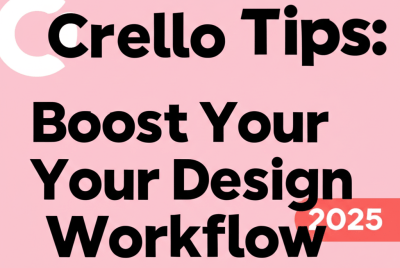Detaching yourself from work works. Creatives exist for the thrill of creating the beautiful and generating high value from it. Some creatives however get self-invested in creative work, taking this work to be a reflection of themselves and getting hurt when criticisms are made.
Gina Lucia, the founder of Limit Breaker, describes an interesting scenario: A creative has a high day when praises are rendered and low ones when negative comments flood in.
If you’re a designer, then you’ve felt this —i.e., the highs that come from an acknowledged design and the lows that come from a critiqued one and this state of emotions based on commentary on design output is called attachment to work, a situation described by Designer Laolu Obende, where designers fail to separate their identities from their work and take criticisms on artworks as directed towards them. The best way to avoid this he says is to “ detach from creative outputs” and never take criticisms as a reflection of creativity, just a thing of the moment.
Sounds good right?
But why should we want this i.e. a samurai life of non-detachment where praises don’t matter?
Designers are, after all, humans and desire a level of praise, which is even regarded as normal so why should we dissociate ourselves from artworks that take painstaking hours to create?
Well, here’s the truth: validating oneself based on the statements of others creates the dependent designer who regards work from the viewpoint of others. You could at some point lose the ability to judge a work based on objective standards and find yourself designing solely for cheers not to mention working for validation is a shortcut to anxiety for graphic designers.
Understanding if you’re attached takes self reflection but Here are 3 unmistakable signs that show if you’re attached to your work
- You internalize criticism: Feedback on work is regarded as a personal attack on your personality.
- Work follows you everywhere: Devices stay close to you even outside work hours. E.g. laptops during a hangout.
- You flip out regularly: You regularly burst out when pressure builds since you feel this pressure to be a reflection of yourself e.g. A client complaining about a deadline.
Graphic designers, like other creators, remain heavily involved with their work. Motion designer Basit recounts an experience involving criticism of his work and how it made him feel. According to Basit, being asked if a designer worked on the video was a blow “I felt bad,” he said.
However, designers can take a different route— that of detachment and remain undisturbed when their creations are critiqued.
Here are 3 ways to detach from your work and the amazing benefits it brings:
3 Simple Methods For Detaching Yourself From Creative Work
1 Detach By Simply Making Space For Something Else
“If you fill your plate with only rice, you won’t have space for sides.” – Ekene Aninyei
Imagine life as a buffet and your 24 hours as a plate. What you fill it with determines the overall enjoyment you get from a meal and just as no one is expected to take only rice, so no one expects you to enjoy only work. It’s okay if it takes a considerable amount of time just as rice would on a plate, but there should be space left for sides.
Enjoying other activities besides work requires deliberate intention since work tends to be consuming.
Here are some tips to make time for other things besides work:
– Track your time spent.
– Learn to say “No.”
– Don’t fuss over unnecessary details.
– Block out distractions.
– Prioritize.
The need to engage in other aspects of life isn’t based on work being a time-consuming or draining activity but simply because the addition of other things makes you… holistic.
2. Join a Banter Group
“The final proof of greatness lies in being able to endure criticism without resentment.” –Elbert Hubbard
The NGD community is a great example of hearts getting torn to pieces; a typical day has at least 10 posts with trolls and praises filling the comment section. But joining this banter, however, does one thing: it builds a tough skin. It shows clearly that praises and jabs come and go like waves, and you shouldn’t go with them.
Reviewing the works of others also helps you build an objective mind, allowing you space to breathe when criticisms are made of your work.
Some tips to give constructive criticism and receive it too
– Provide suggestions for improvement rather than just pointing out flaws.
– Frame your feedback in terms of your observations and feelings. For example, “I noticed that…” instead of “You always…”
– Criticize the issue at hand, not the individual. For example, “The report had several errors” instead of “You are careless.”
– Keep your emotions in check and try not to react defensively
– Focus on understanding the feedback fully before responding. Ask for clarification if needed.
By following these tips, you can ensure that criticism is given and received in a way that is respectful, constructive, and ultimately beneficial for personal and professional growth.
3. Set Up Boundaries
The remote worker is a new animal, running the risk of always running around with work between his teeth – Anonymous.
Remote work allows for new possibilities; 24/7 flexibility, no commuting, and earning a salary in foreign currency. But all remote workers agree that boundaries are blurred in this type of life; It’s easy to attend to that 2-minute typo a client just asked for by 9 pm, easy to jump on a 7 am call to discuss with clients, and super easy to ignore life around you.
This lure of being at home could be a trap when not carefully appraised, thereby converting your home into a never-ending workplace. With so much time spent on work, the danger of attachment easily rises.
A great way to avoid this from happening is by setting boundaries to keep work-related activities in check and prevent them from being a constant housemate.
Here are some tips for preventing work from being a constant companion at home:
– Setting alarms around tasks
– Practicing saying no to more tasks than the day or time allows
– Scheduling non-work appointments around closing hours to force you to close work.
– Discussing with employers on email hours
By ensuring work never cramps up other activities, designers build a mindset for other things beyond work and negative criticism hits less when there’s an appreciation of life extending beyond design.
The Non-Detached Designer Is Ultimately The Objective Designer
Humans are free so long as attachments don’t exist. This state of freedom allows the best decisions to be made ultimately leading to the best work being done.
Why did the color palette remain blue and green negating the color rules every designer knows? why was the icon wrongly aligned and why was so much time spent? It’s likely because an attached designer preferred it and pushed away logic for sentiments. However, in a state of detachment, your preferences are thrown out the window for what simply works leading to the best output.
Ultimately, detached designers become the best designers, creating works that resonate with everyone as they fulfill logical design rules, not some whim or personal taste.
When criticisms and praises come, they are taken as statements directed to a creative work, not the artist himself keeping him from hurt and helping him find objective yardsticks for measuring growth e.g Feedback from mentors, increased pay, and fewer corrections from clients.
Summary of Detachment for Graphic Designers
– Make space for other activities
– Learn to give and take criticisms
– Work within a time slot and not perpetually
Some More Great Reads On Managing Your Graphic Design Career
–Best Laptop For Graphic Design in 2024
–Why creatives earn Lower figures
–Hidden Reasons Why Designers Charge 2k ($2) per Design

